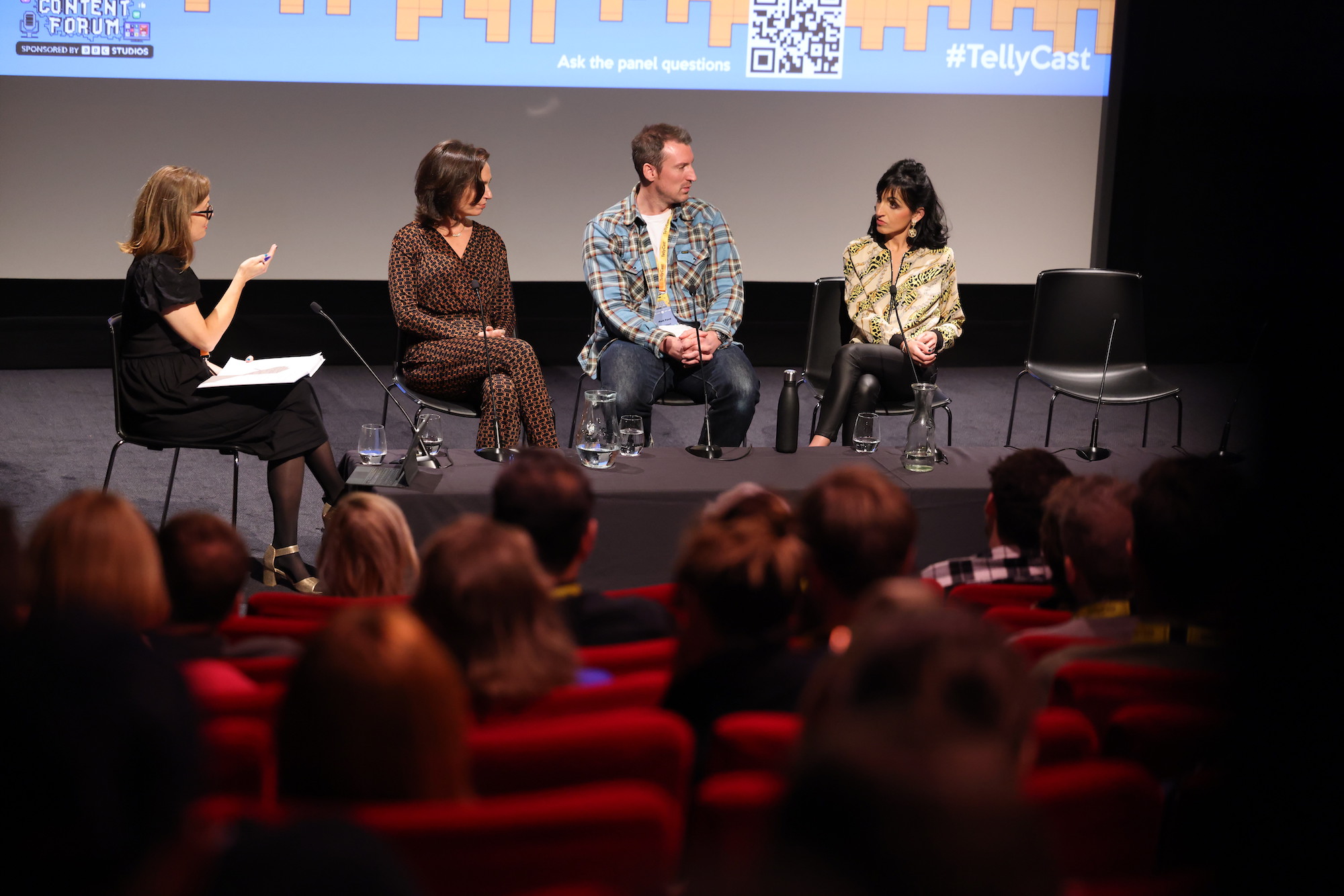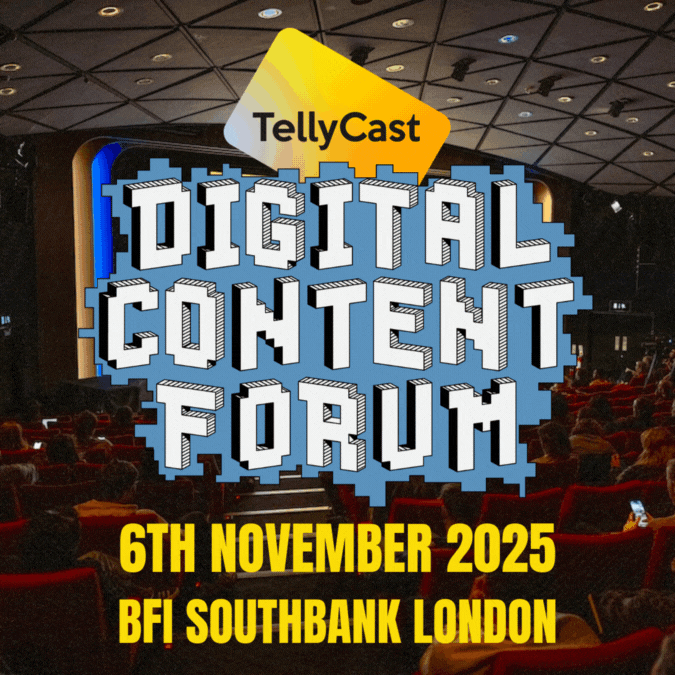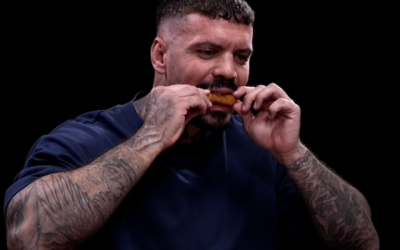On November 30th at the BFI, Tellycast held its first ever Digital Content Forum. Sponsored by BBC Studios, the event attracted a sell-out crowd of digital-first studios, broadcasters, social networks and creators. With a diverse range of participants including the BBC, Channel 4, Meta, Snap, LADbible Group, Jungle Creations and Future Studios, the Forum was an opportunity to learn, debate and share insights about the fast-developing world of digital-first content.
During the course of the event, delegates had the opportunity to network with industry peers, participate in a content showcase and attend a series of panels with digital first thought leaders. Below is an edited version of the Brand Funded Social Content Panel, which brought together 4Studio digital commissioner Laura Marks, Cowshed Social managing director Matt Ford and UTA head of entertainment & culture marketing EMEA, Sam Glynne. The panel was moderated by BBC Studios head of branded entertainment Kate Norum.
Kate Norum: We’ve seen how the pandemic supercharged so many different digital media. How much of an impact do thing you think it had on social content in general and branded social content more particularly?
Matt Ford: I think it’s been a positive for social content. I was at Channel 4’s 4Studios at the time and then moved to Cowshed Social. But I’d say overall we’ve seen people spending more time indoors and on their phones. At the same time, brands have had to find new ways to reach their target audiences.
KN: How does brand funded social content differ from its linear counterpart? Linear AFPs and so on have a lot of stakeholders and rigorous rules.
Laura Marks: It’s a similar principle to linear. We have no lack of stakeholders in digital-first branded entertainment and as a public broadcaster we have standards to uphold. Everything we do has to be editorially justified. It’s true that brands have more of an input in terms of messaging and what they trying get out of the show, but they don’t have editorial control. They might ask for their logo to be shows after three seconds, but they don’t really get that level of input. What they get is a partnership where we work with them on editorial.
A recent successful example would be a project we did with VW around EVs and sustainability. That worked because we made some good editorial choices that introduced sustainability messaging in an entertaining way.
Sam Glynne: That’s important. Because if branded content isn’t authentic and relatable then audiences will switch off. Brands have to tread the line carefully.
KN: What should a brand be trying to get back from its investment?
MF: The measurement of the campaign should be around values. If the brand is only seeking views or reach or engagement, it can buy that. Brands need to be asking how does this shift the dial on purchase consideration or how does it align with our brand values? But at the same time, they shouldn’t be expecting some kind of product sales guarantee. This is the wrong tool for that.
In addition, however, they need to be thinking about what else they can get out of their branded content investment. If you reach a million people, then you need to be thinking about whether you can follow up with them afterwards. And if you’re creating a branded content series then why not get the social agency to produce an ad at the same time? That’s not just about creating efficiencies but making sure there is consistency between the series and the ad campaign.
KN: While it’s right to say that branded entertainment needs to be about transferring values, there’s also a lot of talk about shoppable social content.
SG: Matt’s right that branded content needs to be about authentic values, but we are seeing more ‘sellotainment’ – especially on Asian platforms. I think we will see more situations where consumers are so hungry for a product or service they will want to buy it straight off the screen. I suspect the younger generation in particular will be frustrated if they have to leave the platform they are on, eg TikTok, to search for something they want to buy straight away.
LM: I think it’s probably worth saying that there is a distinction between the value-driven branded entertainment we’re talking about and buying a product because you’ve seen an influencer use it on TikTok. They’re both important to brands and creators, but they are performing different functions.
KN: Presumably access to data is important in this arena.
SG: The difference between TV and social is definitely data. We’re all using it now to target audiences and define what talent, platform and genre we’re going to use. One of the key things that drew me to UTA was its data division IQ. IQ looks at every piece of talent UTA works with and uses the data to identify affinities to brands and platforms. It makes it easier to project ROI in advance.
MF: Data isn’t just important in terms of measurement – but also developing creative insights that can feed into commissioning and production decisions.
LM: There’s still room for gut instinct, but for YouTube and 4.0 we would use data to build a strategy and insights around specific pages. So when a brand comes to us with its own data, we can make collaborative decisions about what talent and destinations would help them grow their audience.
KN: And echoing what Matt and Sam said, what is a realistic ROI metric?
LM: In the case of branded entertainment, it is rarely sales. It is usually around brand awareness, sentiment, trust, authenticity. When we work with brands like Domino’s they’re usually aiming to look cool to their core pizza eating audience.
MF: One point worth noting is that we rarely do branded content on specific products. It usually works better when it’s about brand values or purpose or finding some affinity between brand and audience. Once you’ve done that, you can look to reach out afterward with a different kind of messaging.
KN: Which brands are nailing social content? And are there any new categories investing in this space, that wouldn’t have touched linear?
LM: Branded content in social is more accessible and less expensive than doing a linear AFP, so it does widen the net. We did a campaign with The Body Shop which was their first venture in branded entertainment. That was a gorgeous film about hidden homelessness that delivered well but didn’t cost a lot.
MF: We’ve had a lot of success at Cowshed Social creating content for Foot Asylum’s entertainment channel. That has been so strong in terms of the impact it has had on 13-18 years-olds. While I was still at Channel 4, I worked with Laura and Tom Pullen on a drama series for French fashion brand Balmain. They didn’t have Gucci-sized budgets so they wanted to do something distinctive in short form. We helped them create a beautiful 5-8 minutes series that really pushed the boundaries in terms of what branded content on social can be.
SG: I think social offers a lot of different opportunities to brands, but it all starts with the story they have to tell. Genealogy brand Ancestry has such interesting stories to tell that you can really imagine longer form content. But brands which don’t have such a strong purpose probably suit shorter executions. So I think the nature of the brand can dictate the nature of the platform, genre and format.
KN: Who owns the IP in branded social content?
LM: It’s just the same as linear really. Whoever comes up with the idea owns it – so in this context it is often the production company but it could be the brand.
KN: Channel 4 resurrected the classic format GamesMaster and brought in Meta’s Oculus VR headset as a partner. Can you tell us something about that process Laura and Matt (who was with C4 at the time)?
LM: It was an interesting example of older IP being reinvented for the digital age. It was on YouTube but also had a linear play on E4. The show worked well because it tapped into the nostalgia of audiences that knew it from its original run, but it also offered really good gaming content for younger viewers. It showed there is a way to weave brand messaging into older brands.
MF: We needed a brand because C4 wasn’t going to cover the entire budget. Oculus was right because it could be integrated authentically.
KN: Give us some insights into the opportunities and consideration for brands, coming from the perspective of your own company.
MF: From Cowshed’s point of view, I see an opportunity for brands to make better use of their YouTube channels through content creation. If you just use your channel to dump ads, no one is going to watch. But what we have showed with Foot Asylum is that if you make content for your platform you can create community. Again, it’s not about sales but representing brand values.
SG: From UTA’s perspective, we see the distinction between brands and talent blurring. So we like to treat brands as if they are A list talent. We want to curate their careers in culture and entertainment and connect them with audiences.
KN: Is branded content in social cannibalising existing forms – or is it complementary. Is there room for growth in both areas?
SG: People have an amazing appetite for content and they move fluidly between media. So I thing podcasts, social, book, movies and so on are complementary.
LM: It’s second nature for young people to jump from Channel 4 to Netflix to Instagram etc. The most important thing is take content to where they are.
KN: During the Festival we’ve discussed podcast content being remade for the screen. Can branded content on social transition to linear in the same way?
LM: My team doesn’t really have that aspiration. Linear is a different proposition, different audience, different deliverables. It’s possible talent might migrate from one to the other, but we’re not treating digital as a nursery slope.
SG: In theory, branded content programming (social or linear) can be sold internationally. But it’s hard work because the content is usually so local.
KN: Brands want celebrities to be part of campaigns; but how hard is it for talent to stay authentic once it has appeared in branded content?
SG: That really comes back to the question of choosing talent carefully. At UTA we’re only going to match our talent with brands that align with their passions.
MF: It’s a huge mistake to create a partnership that isn’t authentic. It will get called out immediately – especially in the world of digital-first platforms.
KN: Are there any brands you would love to work with in this space?
LM: I would love to do another fashion brand like Balmain. More generally, I’d like to work with brands that are up doing something very different and quirky, brands that really want to take a risk and do something out of the box.
MF: I think an interesting challenge would be to take an old traditional brand and give it a whole new identity on social platforms like TikTok.
KN: Any hard worn lessons in branded entertainment that you would share?
LM: The main lessons really involve being true to the editorial.
MF: The real problems occur when the editorial gets diluted by the brand – because you get an average piece of work and nobody wins. The best way to get a positive end result is to give the creatives as much freedom as possible.
KN: We’ve talked about sellotainment and shortform. Are there any themes you see emerging in the next 2-5 years in this space? The metaverse, maybe?
MF: Well I’d say the jury out on the metaverse. But I see clear opportunities for brands to work with talent and creatives across their own channels.
SG: I think TikTok Creator Marketplace will continue to develop as a useful platform for brands to connect with the talent that is right for them.





